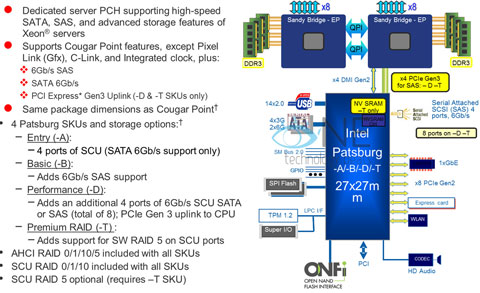Intel Sandy Bridge-E Coming in 2011 With Less Features Than Expected
At the start of the month we reported that Intel Sandy Bridge-E processors and the Intel X79 chipset (Patsburg) were both going to be delayed until January 2012. A new story has been posted VR-Zone that talks more about the issue is having with both the chipset and the processor. The story goes on to say that Intel is trying to get something out in 2011, but they are disabling some of the features on the chipset in order to make the launch date. One of the most interesting issues that the site is reporting is that Sandy Bridge-E was meant to be Intel’s first native PCI Express 3.0 enabled CPU, but due to lack of hardware to test PCI Express 3.0 compliance with, Intel has decided not to include PCI Express 3.0. We can only hope that the Intel X79 LGA2011 platform supports it, but just won’t initially be sold as having that feature.

Judging by the information we’ve seen, Intel is having several issues with the new platform, ranging from storage, to PCI Express and apparently even CPU revisions. It’s pretty much bad news all around. But let’s take a step back and look at things with a view from Intel’s Xeon roadmap. The picture below is from a partner presentation and although it’s been seen before, we’re going to leave that partner un-named as we don’t want to get them in any trouble. As you can see, it details four different chipset SKUs for Patsburg,- A, -B, -D and -T. The X79 chipset is known as Patsburg-X and was meant to be similar in terms of features to the Patsburg-D SKU. Patsburg-X or X79 if you like, was meant to come with the same features as Patsburg-D, more or less, albeit with some additional consumer tweaks. However, due to whatever issues Intel is having, the company has now decided to downgrade the feature set and we’re now looking at a chipset that is similar to Patsburg-B instead. This means no PCI Express 3.0 storage uplink to the CPU and the loss of four SATA/SAS 6Gbps ports. Even for the most performance demanding users this isn’t likely to be a huge issue though, but it’s still disappointing, especially after having seen so many boards on display at Computex with 14 SATA ports on them.

Comments are closed.